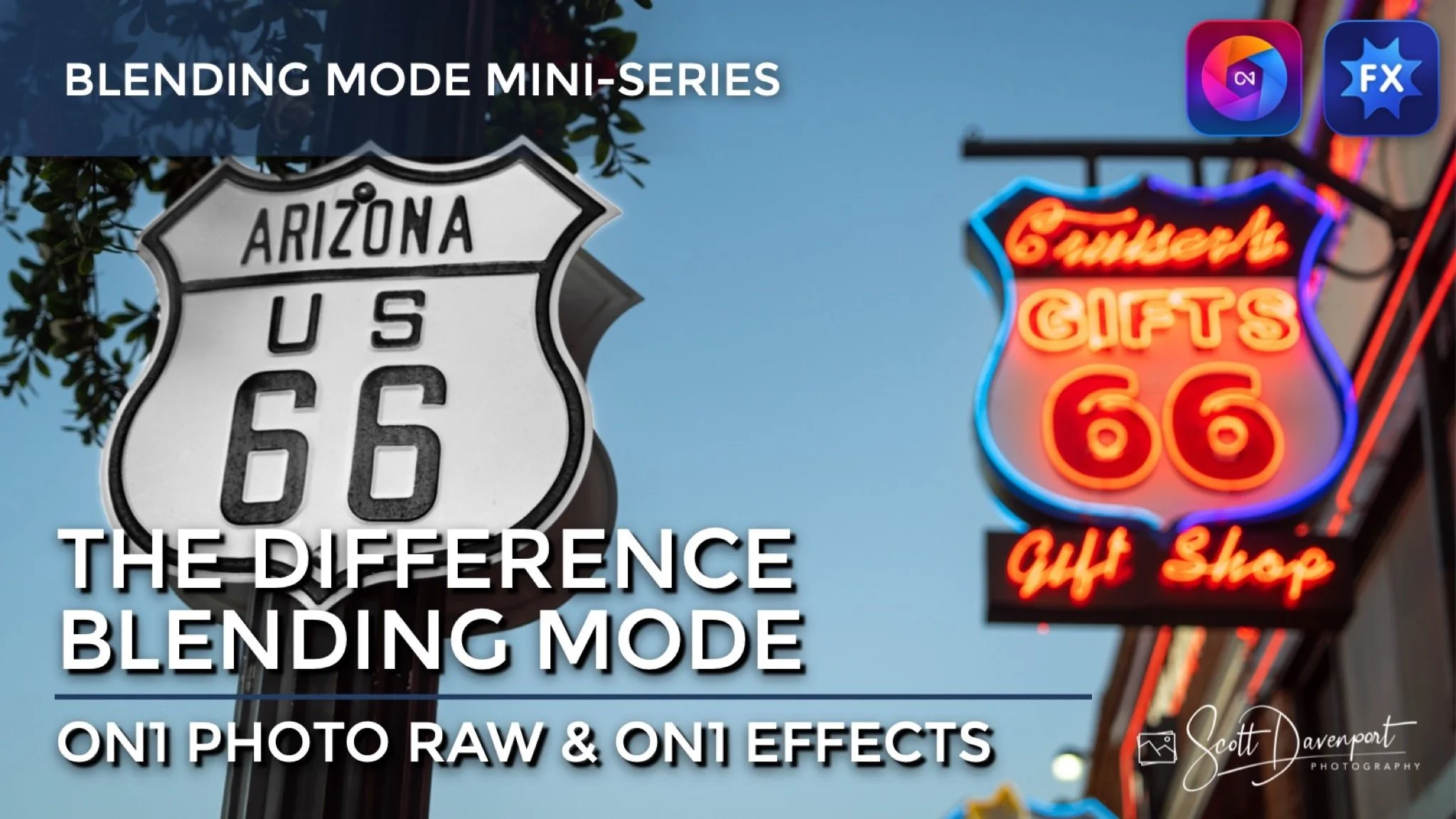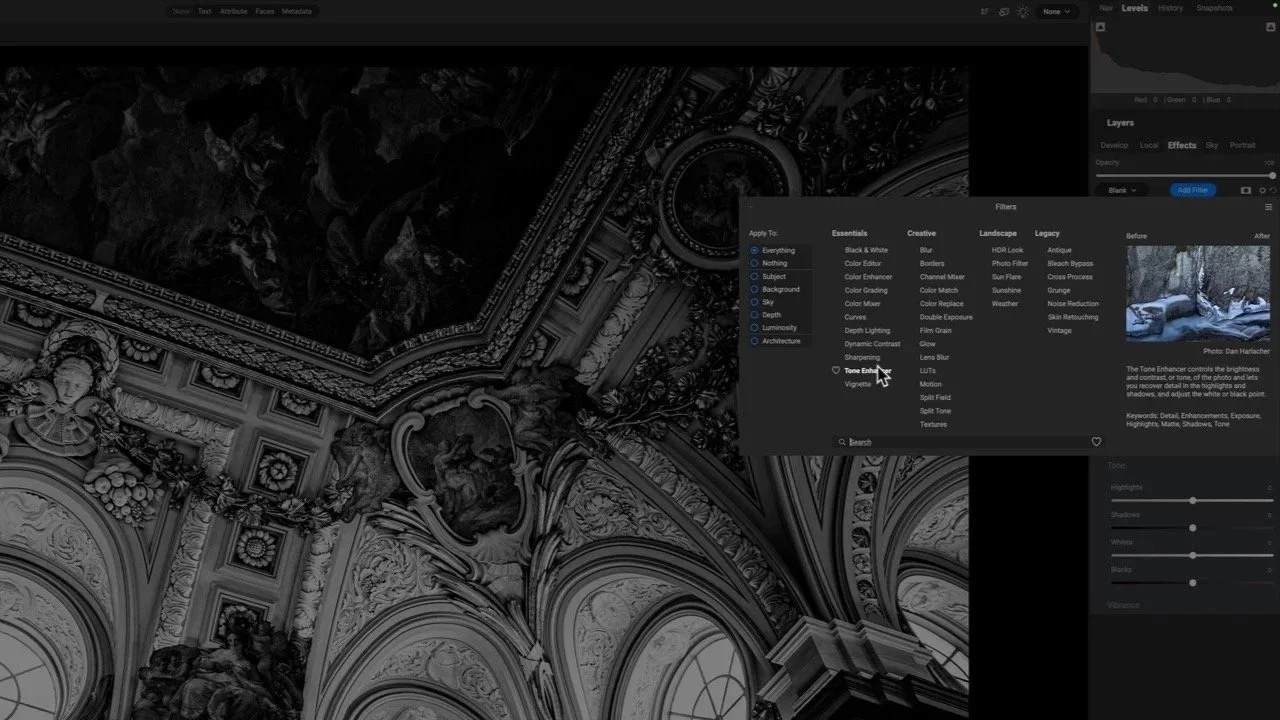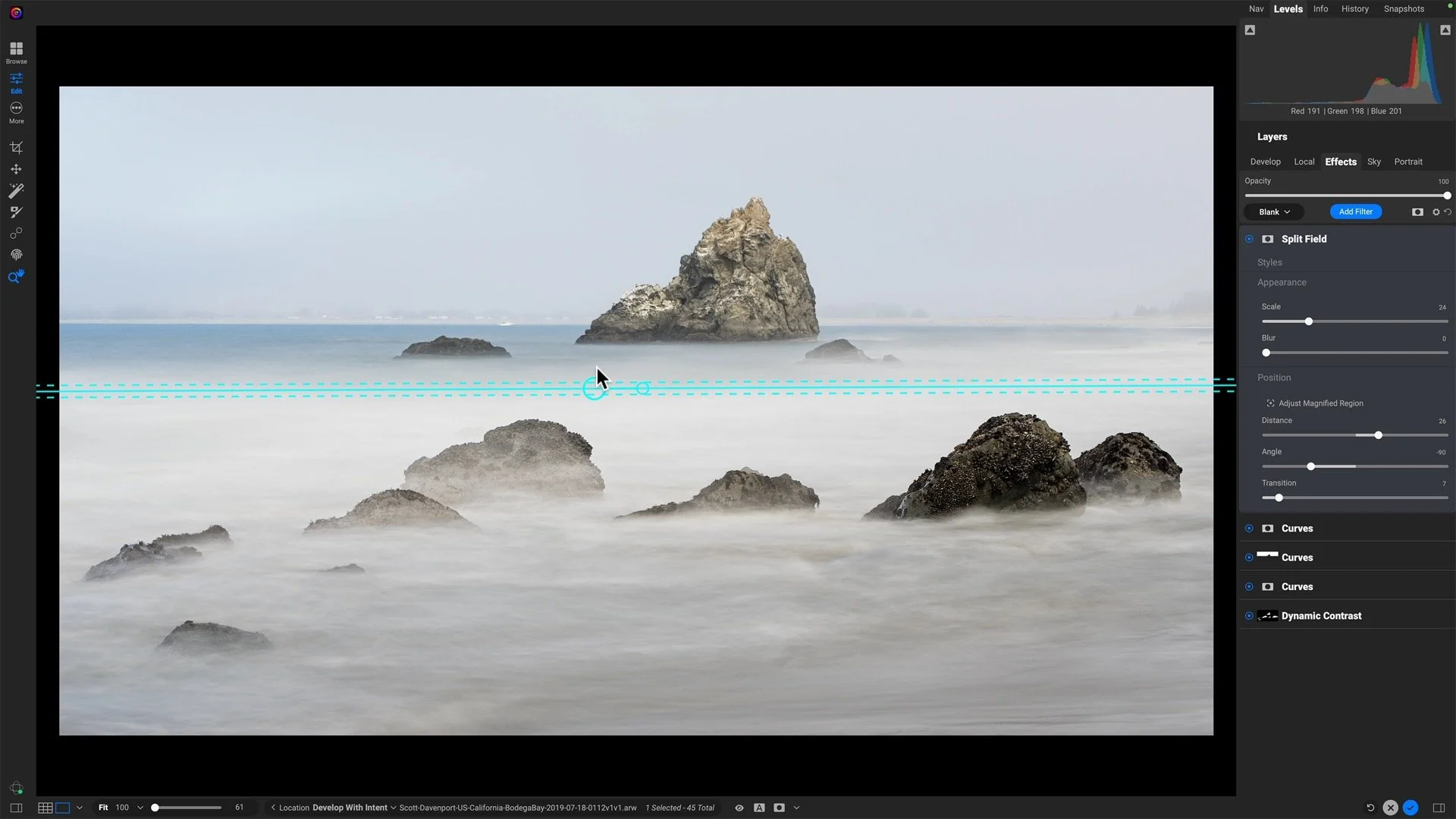The Difference Blending Mode In ON1
If you are trying ON1 Photo RAW, the ON1 plug-ins like ON1 Effects or ON1 HDR, or upgrading your ON1 software to a newer version, please consider using my affiliate link. There is no extra cost to you and it helps support ON1 tutorials like this one. Ready to buy? Use the offer code SDP20 at checkout and SAVE 20%!
This article is part of a mini-series about the blending modes in ON1 Photo RAW and ON1 Effects.
What Is The Difference Blending Mode?
Difference does a pixel by pixel comparison of a layer to the layer below it and finds differences. When the pixels are identical, the top layer pixel is rendered as black. Otherwise, some subtractive math (hence the name, difference) is done resulting in a brighter display of the pixels. The looks are often jarring and I use Difference sparingly.
Aligning Layers With Difference
Difference may have some uses outside of layers (ex: color grading), though it is with layers that I will turn to the Difference blending mode. ON1 has an auto-align layers feature and that works very well. However, there are times I want to sanity check the alignment or I have a need to manually align layers. Difference is perfect for this work. Here is the recipe to manually align layers with the Difference blending mode:
Load your images into Layers
Switch the blending mode of the top layer to Difference
Use the Transform tool to reposition the top layer
Get as much black as you can showing in the preview area (it likely won't be all black)
Apply the Transform changes and switch the blending mode of the top layer back to Normal (or your mode of choice)
Difference will show differences between the layers. When layers are aligned, the pixels turn black. Remember that in the field, and even in a studio, lighting is always changing. You will likely see some areas that are not pure black - that’s expected. When auto-align doesn’t work for you, try Difference and get as close as possible.
Use the Difference blend mode and the Transform tool to manually align layers. Difference visualizes the misalignments for you.
The goal is as much black as possible when manually aligning. Lighting is always changing, so a complete black result from Difference is unlikely.
Up Next
The final article in this series on blending modes in ON1 is the Exclusion blending mode.
Route 66 Signage
Contact Scott to commission a print or license this image.













